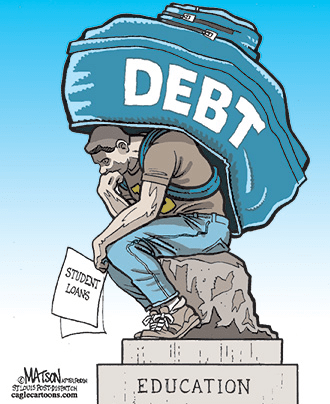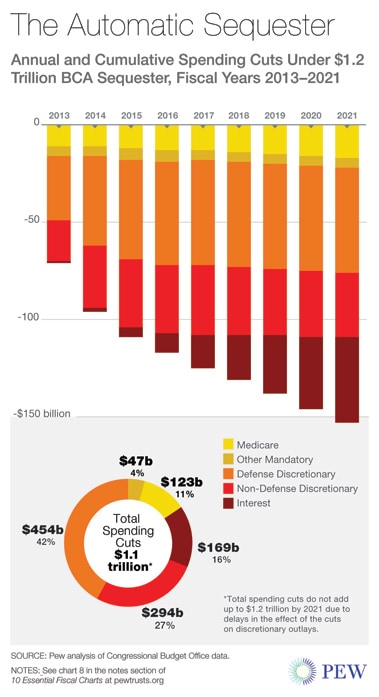Posts Tagged ‘sequester’
The Young Politica: What’s Next for Student Loans
In my last column, I wrote about how the sequester could deeply impact students of all ages—by cutting education jobs, programs like Head Start, food stamps, and limiting financial aid. Well, once again, kids trying to get an education are at risk of being undercut by the federal government.

The interest rate of new federally subsidized Stafford loans will revert to 6.8 percent from 3.4 percent. The rate subsidized loans, which go to low-income households, was supposed to rise to 6.8 percent back in June 2012, but the rate’s expiration was postponed for a year. This year’s extension lasts until June 30, 2013. If Congress does not act to change the rules or extend the loan rate expiration date, an estimated 7.4 million college students will be affected.
Note that each year the date to change the rate is extended, the federal government loses out on about $6 billion in revenue. But students don’t necessarily have to be the ones paying the price. If there would have been more oversight on the financial aid process, the federal government could have prevented a loss of $200 million in federal student aid fraud since 2009.
What’s a good solution? Rather than postponing the expiration again, the House Education and the Workforce Committee argued that Congress should reevaluate their rate-setting process for all government-issued college loans.
FoxNews.com reports that the Department of Education has also been sending out letters to inform Direct PLUS Loan borrowers that their fees are being raised as a direct result of the automatic budget cuts (or the sequester) that happened after the federal government could not come to a fiscal agreement. Fees for loans issued after March 1, 2013, will have an adjusted loan rate fee—from 4.0 percent to 4.204 percent.
Students are taking more and more hits, but at least they’re putting up a fight.
Read MoreThe Young Politica: Students Should Brace for the Sequester
Once again, we’ve waited until the last minute to try and fix our fiscal problems. This time, it’s the sequester that will go into effect on March 1st unless Congress acts. 
If the sequester goes into effect, about one trillion dollars of federal spending will get cut—half of the cuts going towards defense ($42.7 billion). These cuts may cause furloughs in defense sectors (military, airport security) and other cuts may leave many teachers out of jobs.
About $3 billion of sequester cuts will go towards education. According to the National Education Association the sequester will result in:
- Services cut or eliminated for millions of students.
- Funding for children living in poverty, special education, and Head Start slashed by billions.
- Ballooning class sizes.
- Elimination of after-school programs.
- Decimation of programs for our most vulnerable—homeless students, English language learners, and high-poverty, struggling schools.
- Slashing of financial aid for college students.
- Loss of tens of thousands of education jobs—at early childhood, elementary, secondary, and postsecondary levels.
However, the education cuts can be made smarter in a smarter way.
Read More